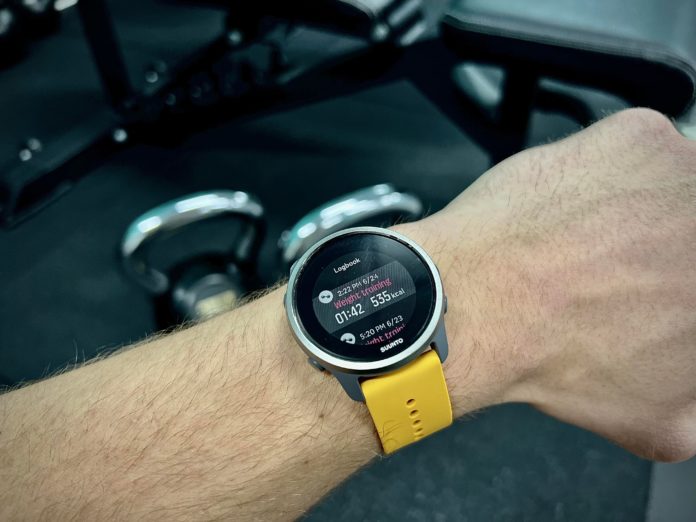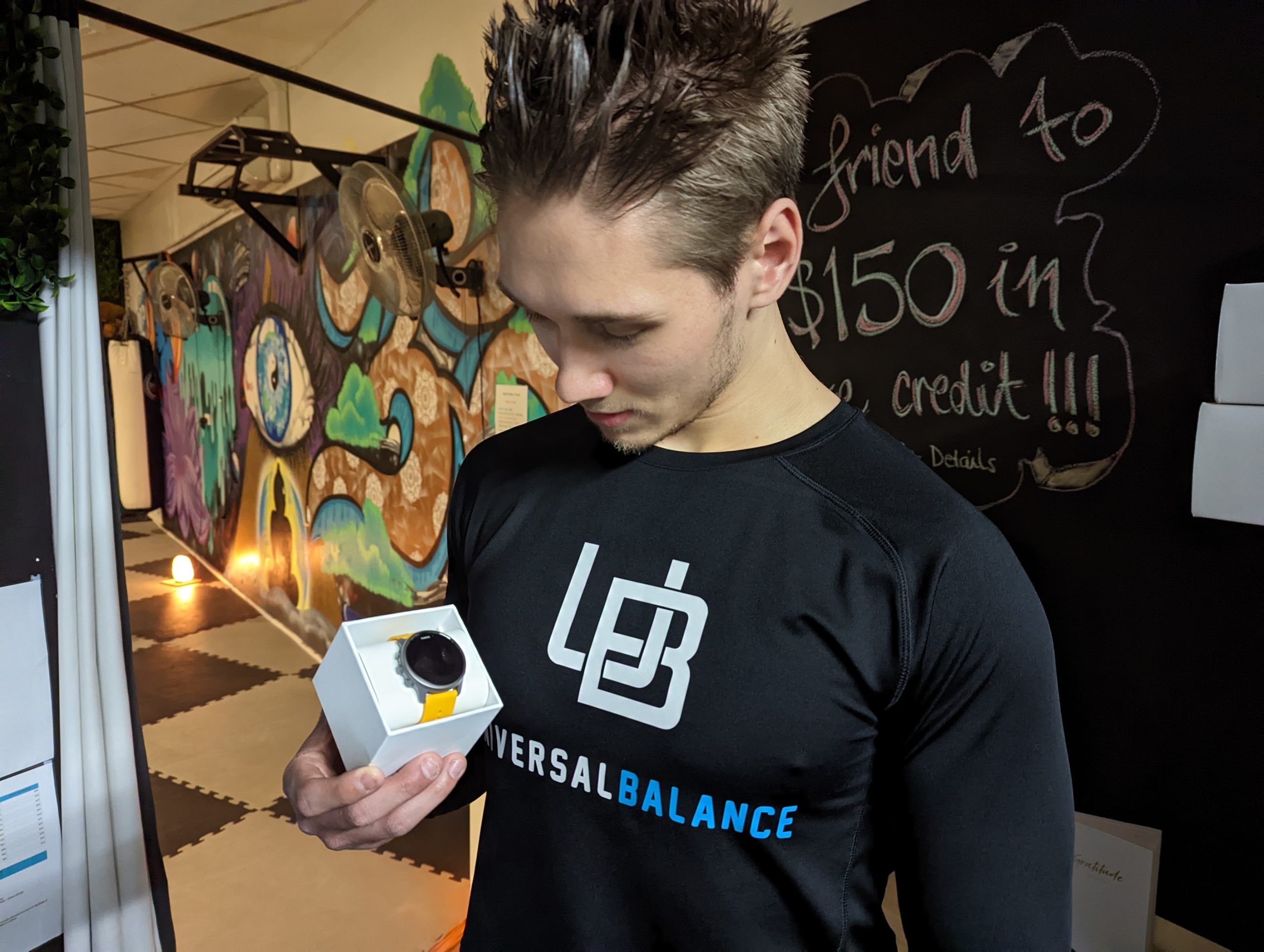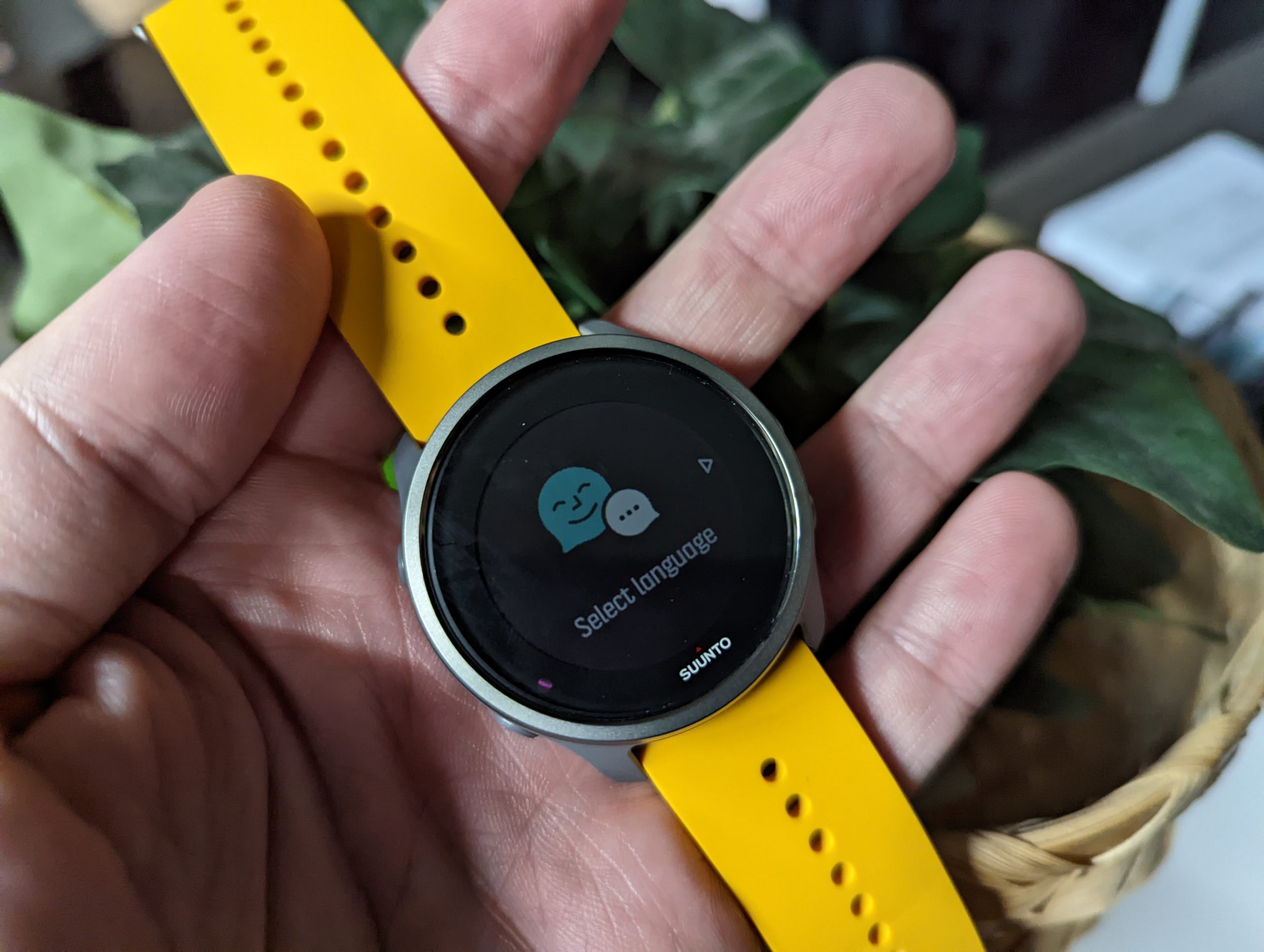Generally, when we review hardware at Ausdroid, the review is based on the user experience. But sometimes it’s nice t take a more fact based approach to devices. When we were approached by Suunto to review the 5 Peak, it seemed a great opportunity to do exactly that: Meet Shane who is my personal trainer at Universal Balance.
He’s still a young lad but has a wealth of experience behind him when it comes to health and fitness activities including the obligatory certificates in group fitness and — important for my personal favourite class — boxing as well as personal training and group personal training. Accompanied by a work history that shows commitment to his employers, Shane is in a good position to understand and analyse what the Suunto 5 Peak has to offer from a high-level view.
What is it?
In simple terms, it’s a fitness tracking wearable with all of the expected features of such. You’ll get the usual array of controls and tracking in your daily life. It’s important to note that this is more a fitness watch that can work as a smartwatch, offering only basic notifications, not interactions or input options for users to respond. There’s just “too much” fitness focus here for it to be a good buy unless you’re going to use it.
Where the Suunto is said to stand out is the battery life and its lightweight, yet somewhat durable design. I say somewhat, purely because the feeling of the device is a little plasticky on immediate impression, in fairness, this is compared to the hefty Huawei Watch GT3 I recently reviewed.
The screen is a 43mm LCD display that, while generally easy to read, isn’t as bright as perhaps it should be if you’re wanting to do indoor, gym-based workouts.
The big question I was asked straight away, is can the Suunto 5 Peak deliver everything that’s expected of a $500.00 watch?
The look and feel
I’ll be honest, and I mean brutally honest, here for a second, the initial impression isn’t great from a presentation perspective. While it doesn’t feel flimsy, there’s a slightly plasticky and cheap look about it. This is slightly offset by the metallic ring around the device that softens the look and makes it seem closer to the $499.99 value.
Perhaps the review unit colour contributed to this, as the review unit was Ochre (a yellowish-brown colour) which seemed to change slightly depending on the light. But being such a bright colour made the watch look and feel a bit like a toy rather than a resource or a tool. Personally, I feel like the black or Heather colours are more tempered in their presentation and more appropriate to daily — particularly business — wear.
The other contributing factor to it feeling like a toy is the minuscule weight of the device, it’s just 39 grams. It’s a definite lightweight in the watch arena, so while it makes the device feel a bit like a toy, that lack of weight also contributes to the extremely comfortable and wearable nature of the device throughout the day.
A couple of small notes from Shane on the design were around the “ochre” colour choice for the band, which is quite eye catching. If this was a device that he had chosen the colour, he’d probably have gone with something a little less bright so the device could be worn not just at work but in more casual and formal settings. The fact they’re a standard push clasp band which makes it easily interchanged for another band if you choose to do so.
What becomes quite evident quickly with the Suunto 5 Peak is it’s a fitness wearable, not a smartwatch. Without a touchscreen or any other real “smart” features to speak of.
Features and software
There’s plenty to like about the Suunto 5 peak when it comes to the features included in the watch. Perhaps though, a missed opportunity, to the point of disappointment that it doesn’t include a touch screen. While this is great for battery life, offering generally four or five days with workouts nearly every day, it’s a hindrance for those who want faster navigation and more “smart” features.
What it does have is a simple to read (and customisable) watch face, that you navigate through by using the side buttons. Because of his use case, either delivering training or working out himself, Shane wants access and control navigation to be quick and easy. The controls are easy to use, respond quickly, are intuitive and — provided you position the watch as per directions — unlikely to be accidentally triggered which makes them great value.
The controls are broken down into five buttons around the face of the watch. The bottom right scrolls through data options including heart rate, stress recovery, steps and calories then return to the normal watch face. The middle button is a select button to activate the selected feature. The top right button allows you to cycle through the watch features like exercise, navigation, a training logbook (the app is better…), stopwatch and settings for the device.
The top left button changes the watch face to include the data that you’d like to persistently see on screen. The bottom left operates as a back button to go back a single step in navigation.
In terms of the software feature set, Suunto has its own community platform similar to that of Fitbit and Garmin. There are a number of good automated integrations into other platforms, unfortunately though, data interoperability to some of the larger platforms like Google Fit and some of the more proprietary options just aren’t there.
The platform works well but it’s probably best if you’re already on it and engaged with others there.
Health Tracking and daily use: Shane’s opinion
When we sat down to discuss the user experience from a fitness users perspective, Shane was really complementary of the Suunto 5 Peak. As a starting point, he couldn’t even put a number (it’s over 80) on the activities that can be tracked. So it really is hugely versatile across a huge range of sports and interests, but that also introduces the problem of scrolling through a bit list to get to what you’re looking for at times: Put your favourites at the top of the list to avoid this!
Aside from tracking fitness activities, any good fitness professional will tell you that recovery is important too. He said that he can see the difference in his workouts in the recommended recovery time:
Probably my favourite feature at the moment, is the recovery mode. Calculating how my recovery is needed based on the activity intensity throughout the day.
Outside of the context of this review, Shane and the other trainer at the gym have both said to me that you should spend as much time working on recovery as exercising. For someone who is just getting started on their fitness journey, the recovery recommendations are probably as important as the tracking.
During testing of the sleep tracking he said that it seems very accurate. The watch didn’t disturb him with notifications or vibrations as some other device experiences deliver. The watch steadily got easier to navigate the more it was used.
Shane was genuinely impressed with the data captured around metrics like heart rate, calories burn and steps saying they seem to be very close to accurate.
While it’s perhaps a touch behind some other watches, the battery life of the Suunto 5 Peak is pretty good. Shane said he’s consistently getting four or five days even when he’s working out up to 2 hours a day. If you’re working out every second day and rarely using the GPS, you’d likely get closer to the quoted 10 days — usage dependent of course — battery life between charges. This is on top of the activity and sleep tracking as well as heart rate monitoring throughout the day.
The data captured is pretty broad and, in isolation, not hugely indicative of anything. The longer term trends towards lower resting heart rate, longer periods of activity, better rest, recovery and weight loss are what matter in terms of generally better health.
Is the Suunto 5 Peak worth it?
If you’re looking for a hard wearing fitness tracking device with some basic notification capacity then this is a really good option. There are choices for presentation with different coloured bands to suit your daily needs in terms of the environment you’re in.
There’s a lot of data captured that is intended to help you over time, improve your health and guide you towards more efficient training too. There are some integrations into popular activity tracking platforms, but — not necessarily a fault of Suunto, more the providers — not into more commercial options, so if you’re in Garmin, Google Fit or Apple’s platform then this probably isn’t for you.
It would be nice if there was a bit more by way of interaction with notifications and NFC for payments would certainly increase the value. That being said, there’s plenty of value in this already for the fitness focused users who don’t have $800.00 to $1,500.00 budget for some of the competitor products.
The full RRP is $499.00 but at the time of publishing this review, down to $399.00 at a variety of retailers which is well worth it for what you’re getting.
Disclosure Statement
Due to hygiene reasons, the device has not been requested for return


















